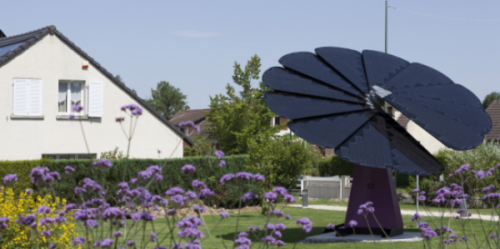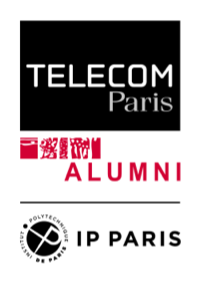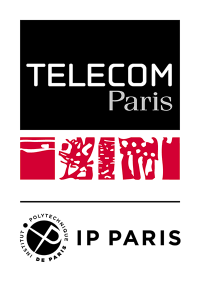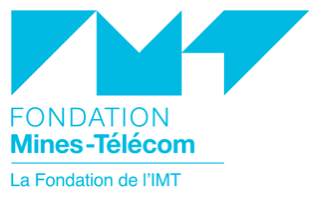
Revue TELECOM 187 - Empowering the 'prosumer' energy revolution
EMPOWERING THE 'PROSUMER' ENERGY REVOLUTION
By Lawrence Orsini, founder and CEO of LO3 Energy dans la revue TELECOM n° 187
As rapid developments in technology make small-scale sustainable energy generation more accessible and affordable, consumers are becoming ‘prosumers’.
Now a new system for peer-to-peer energy trade created by a US-based energy start-up is about to turn the industry upside down.
The rise of the prosumer
People are becoming increasingly aware of the impact energy has on their lives and their wallets, and new technologies are now enabling them to have a greater say in how it is produced and consumed.
The integration of smart devices in the home means we are more in control of the energy we use than ever before and the growth in consciousness of global warming and climate change is encouraging a growing number of people to make their energy usage more efficient and green.
For a relatively small outlay, we can now have lights that turn off automatically when we leave the house, heating that powers up when we are on the way home, and appliances we can turn on and off remotely. We are now consciously powering off to reduce our energy consumption.
At the same time, the cost of small energy generation solutions such as solar panels and wind turbines is dropping as the technology moves from early stage to mainstream. As a result, people are becoming ‘prosumers’ and generating their power to integrate with the grid.
The traditional model in which a relatively small number of large-scale power plants produce energy from unsustainable resources and feed it onto a national grid is being replaced by a new approach.
Instead, mid-scale local renewable energy plants such as solar, wind, wave, tidal and hydro combined with at-home energy generation such as solar roof panels and micro combined heat and powerplants are creating a more distributed energy network.
This new approach is still bound by the traditional sales routes managed by grid providers and major utilities - but that no longer needs to be the case.
Connectivity, online social platforms, A.I. and the ‘internet of things’ now enables a huge amount of ‘big data’ to be created on consumer patterns, trends, associations and energy usage. Cloud computing offers the ability to remotely store, manage and process a significant amount of energy industry relevant data.

The only thing missing has been a solution to enable consumers to securely and transparently interact with this data and turn their energy production and consumption choices into a commodity they can sell directly to others. But now we have the answer.

The microgrid solution
In several neighbourhoods of Brooklyn, New York, we have developed a local transactive energy microgrid based on a secure, distributed ledger blockchain platform initially developed for monetary bitcoin transactions. And it's through this success, we have started a revolution.
LO3 Energy was founded in 2012 with the goal of reforming the energy industry, maximizing the efficiency of energy usage and creating a more sustainable future for the planet.
One of the driving forces behind the Brooklyn microgrid was to give people control over the type of energy they want to support. For an energy revolution to take place, people needed a 21st-century tool that will allow them switch to choose their energy preferences.
The wheels were already rolling with the growth in renewable energy production, but it was clear that the only way to accelerate this shift towards a distributed energy solution was with the security of the blockchain and the commitment of local communities to embrace the idea of distributed energy.
The blockchain is a decentralized digital ledger, which means that private computers all over the world can verify transactions automatically. When a new transaction is presented, and enough computers verify its authenticity, it’s added as a new block or a new entry in the ledger.
Installing our transactive grid technology in homes and businesses allows us to use this blockchain platform and to stake with XRG tokens. XRG tokens are the mechanism that prosumers, consumers, wholesalers and retail providers will use to initiate energy trades on the Exergy™ system. And by giving people the mechanism to access that platform to buy and sell energy and demand we can create a localized energy market, managed by the neighbourhood itself.
Also, in times of need, the microgrid can operate independently from the larger grid during power outages, providing a safe, resilient grid that can serve as a backup for the neighbourhood in emergencies.
The world’s first successful peer-to-peer energy transaction was conducted on a blockchain in Brooklyn in April last year between two neighbours, one of whom had solar panels producing excess energy and the other who did not own panels but wanted to buy green energy. The platform enabled them to agree on a mutually attractive rate and make a secure transaction between each other.
In two years, the microgrid has now connected hundreds of like-minded prosumers and consumers in Brooklyn, helping to accelerate innovation and evolve the regulatory changes needed for local peer-to-peer transactive markets to happen. We are now rolling out this concept in the US and around the world, with projects in Europe and Australia and more to come.
The energy revolution is no longer on its way. It has arrived.
Biographie de l'auteur

Lawrence Orsini is the founder of LO3 Energy, an energy and technology company that builds tools and develops projects to accelerate the proliferation of the emerging distributed energy and computation economy. He previously spent more than a decade working on all aspects of utility scale energy programs, codes and standards and regulations. Fast Company named LO3 Energy one of the world’s 50 most innovative companies in 2017.


























